A centaur is defined as "a creature with the head, arms, and torso of a man and the body and legs of a horse." Greek legends of their origin vary; some were the descendants of Ixion and Nephele, while others were the product of a human named Centaurus mating with the Magnesian mares. Although early Greek literature only mentions male centaurs, later accounts tell of Kentaurides, the sisters and wives of centaurs living on Mount Pelion. [source]
In this piece (my final project for Drawing II) I played with the idea of how these centaurs and Kentaurides may have functioned internally. Their anatomy is quite problematic, given that the horse's shoulders and "arms" are set to function as the "hind" legs for the human half, thus necessitating a weight-bearing mechanism between the centaur's equine shoulderblades where none is present in a real horse. Furthermore, the lower back muscles of the human half must be particularly strong in order to hold the human half upright, due to the spine's sharp 90-degree bend. Due to these complications, I had to invent some of the Kentauride's anatomy. (This development is shown in the three smaller sketches accompanying the main piece.)
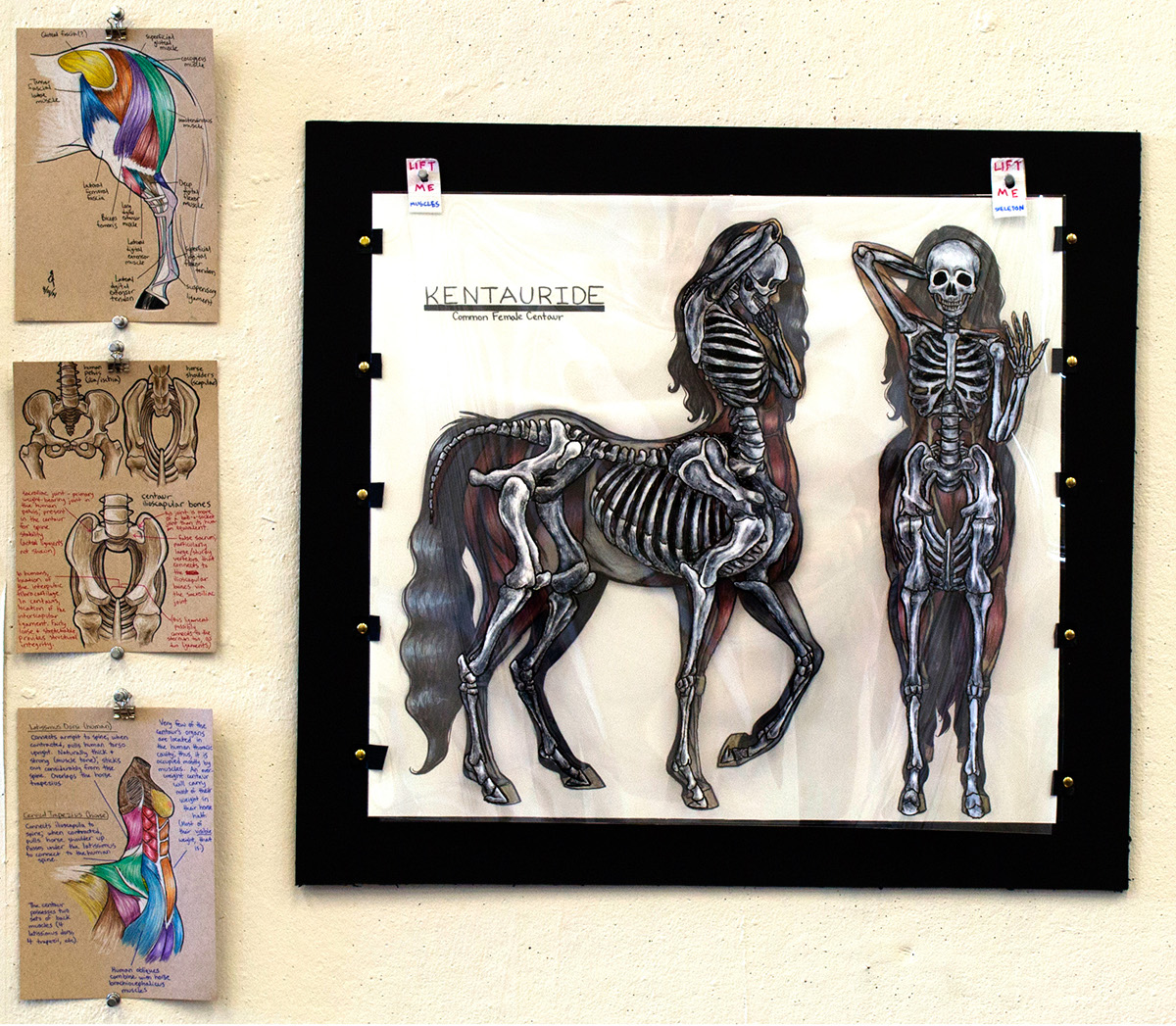
The full layout of the piece, including sketches. This view shows the Skeletal overlay on top, with the Muscular overlay underneath.

The Skeletal overlay alone, with the Muscular overlay folded to the side.
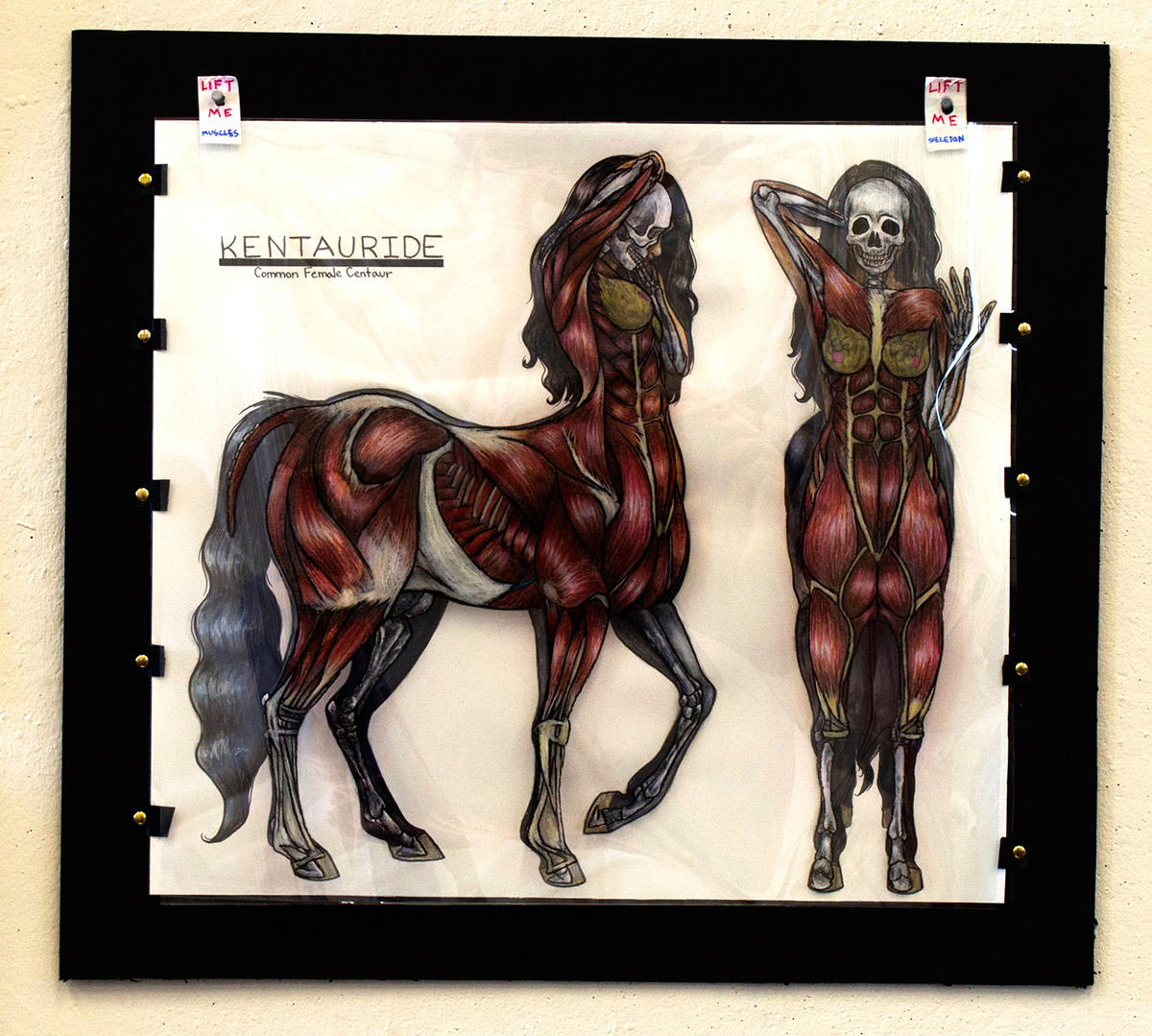
The Muscular overlay on top, with the Skeletal overlay beneath.
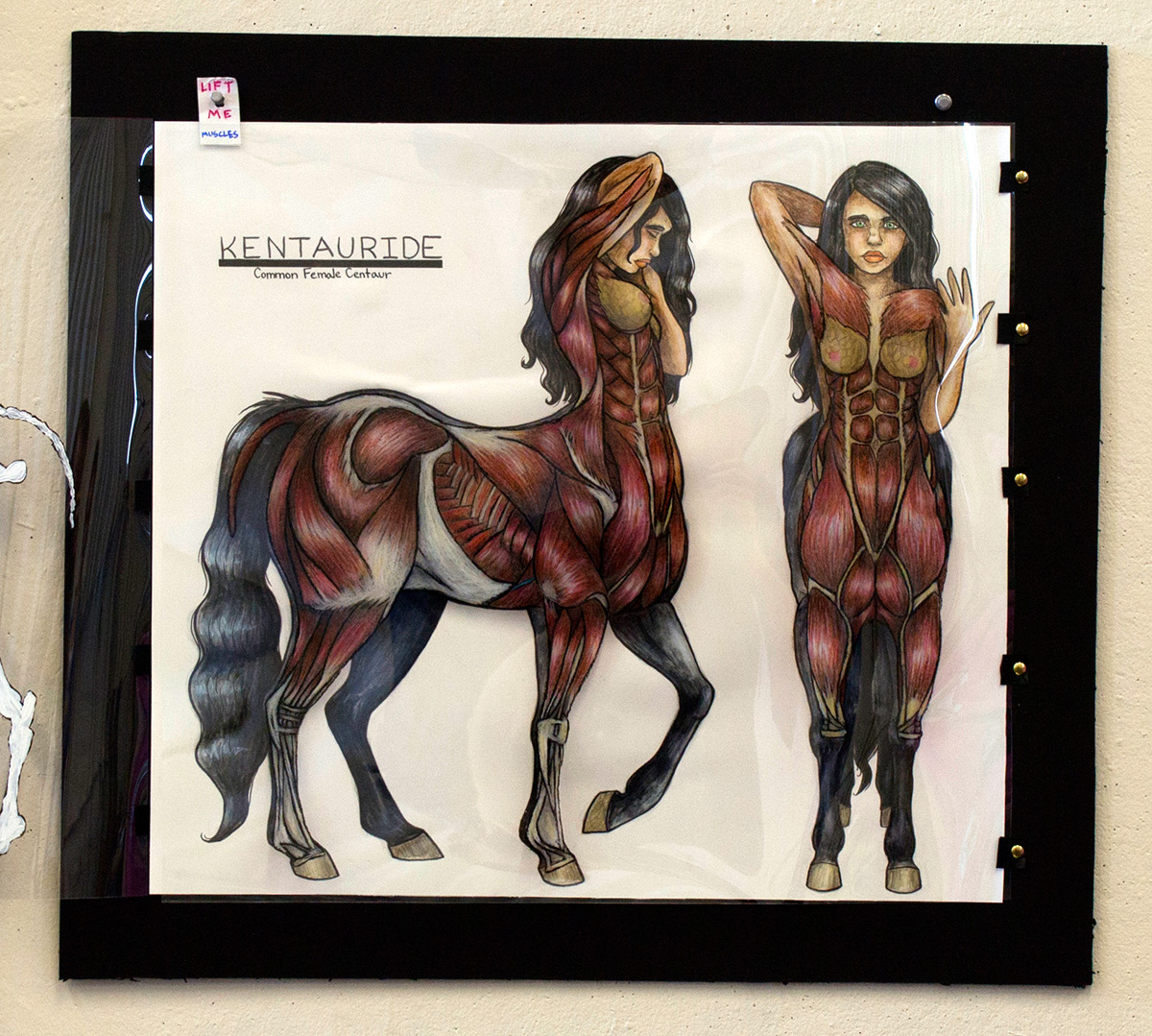
The Muscular overlay alone.
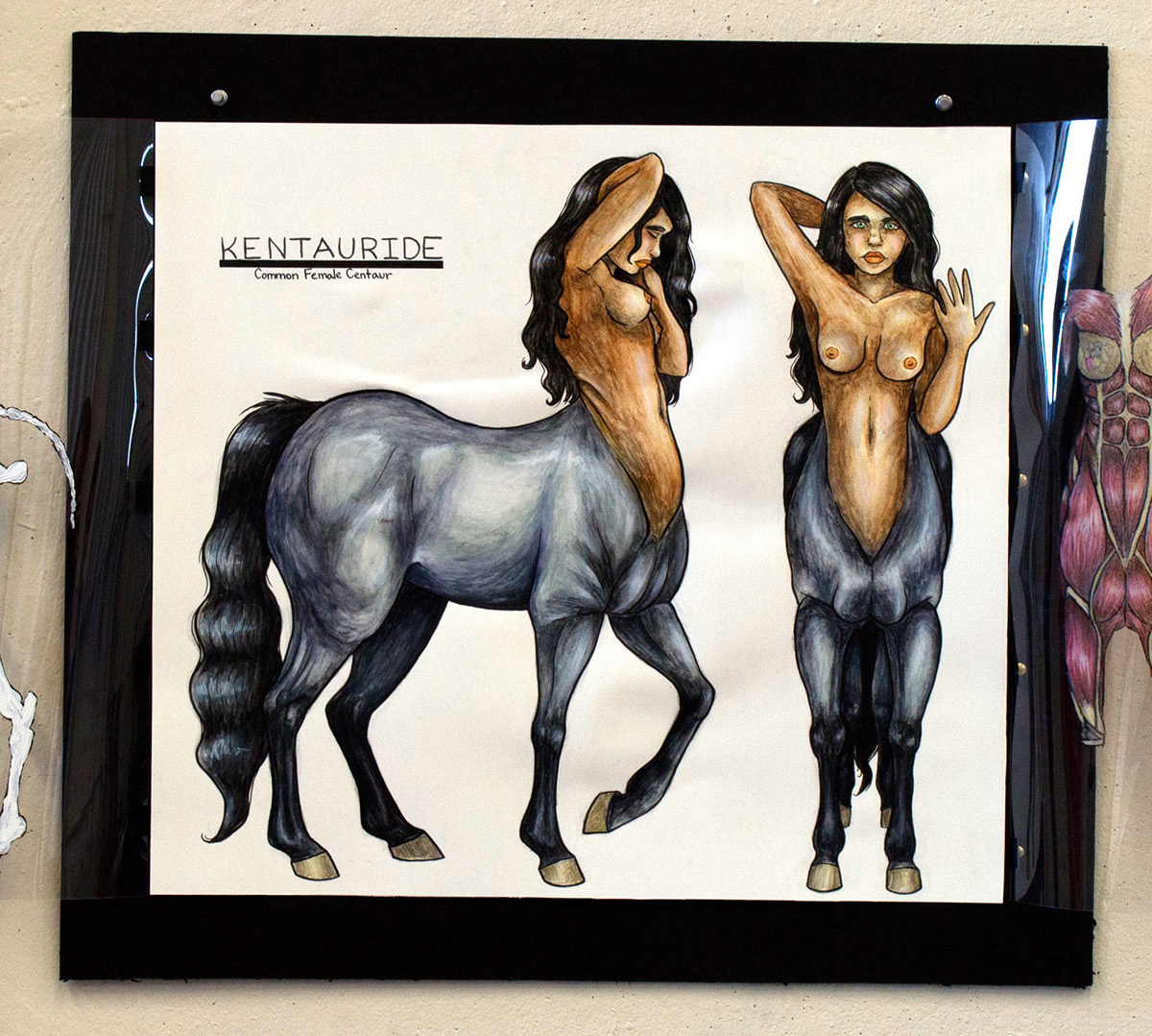
Both overlays folded aside.
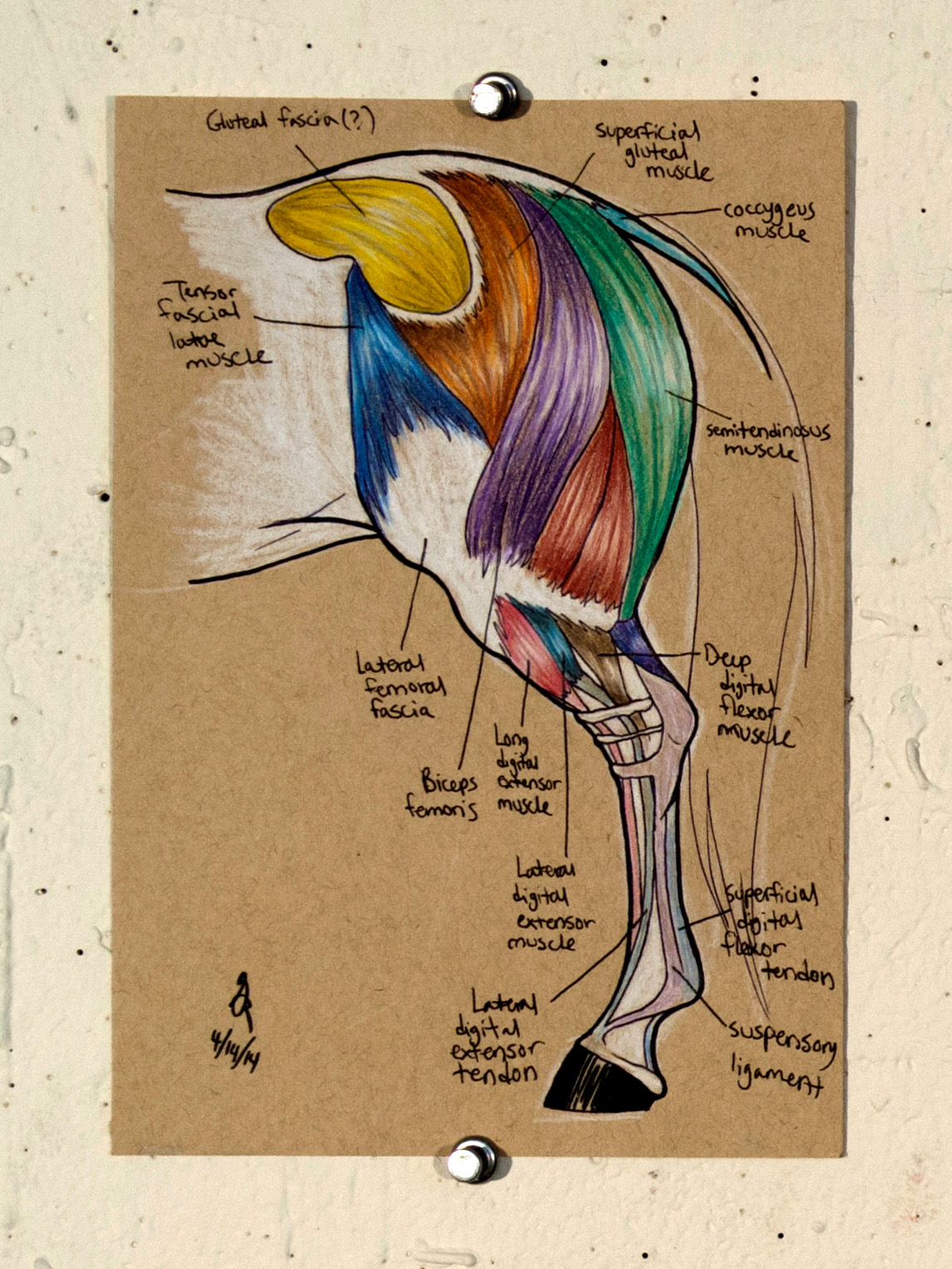
Sketch 1 - Leg Anatomy
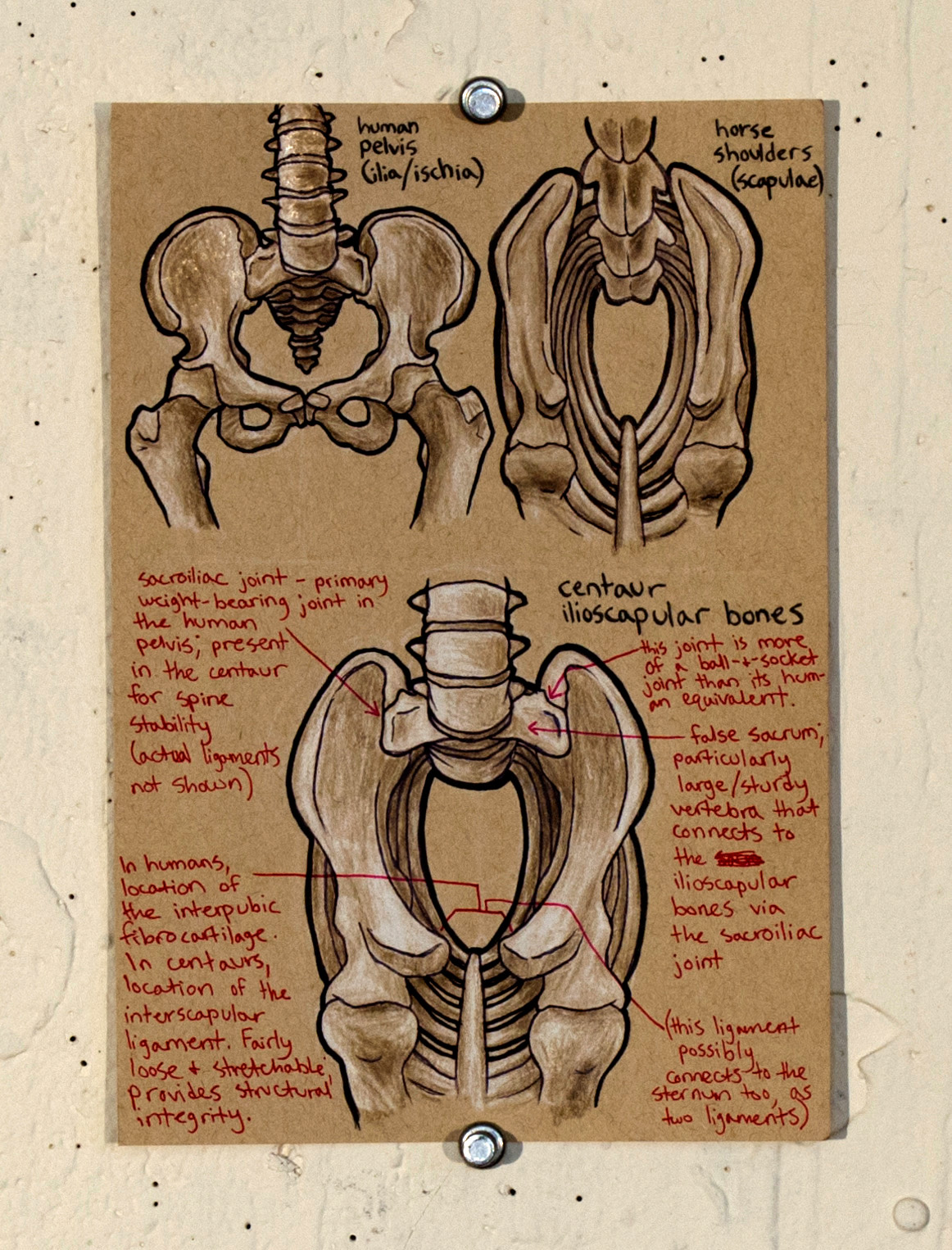
Sketch 2 - The Ilioscapular Bones
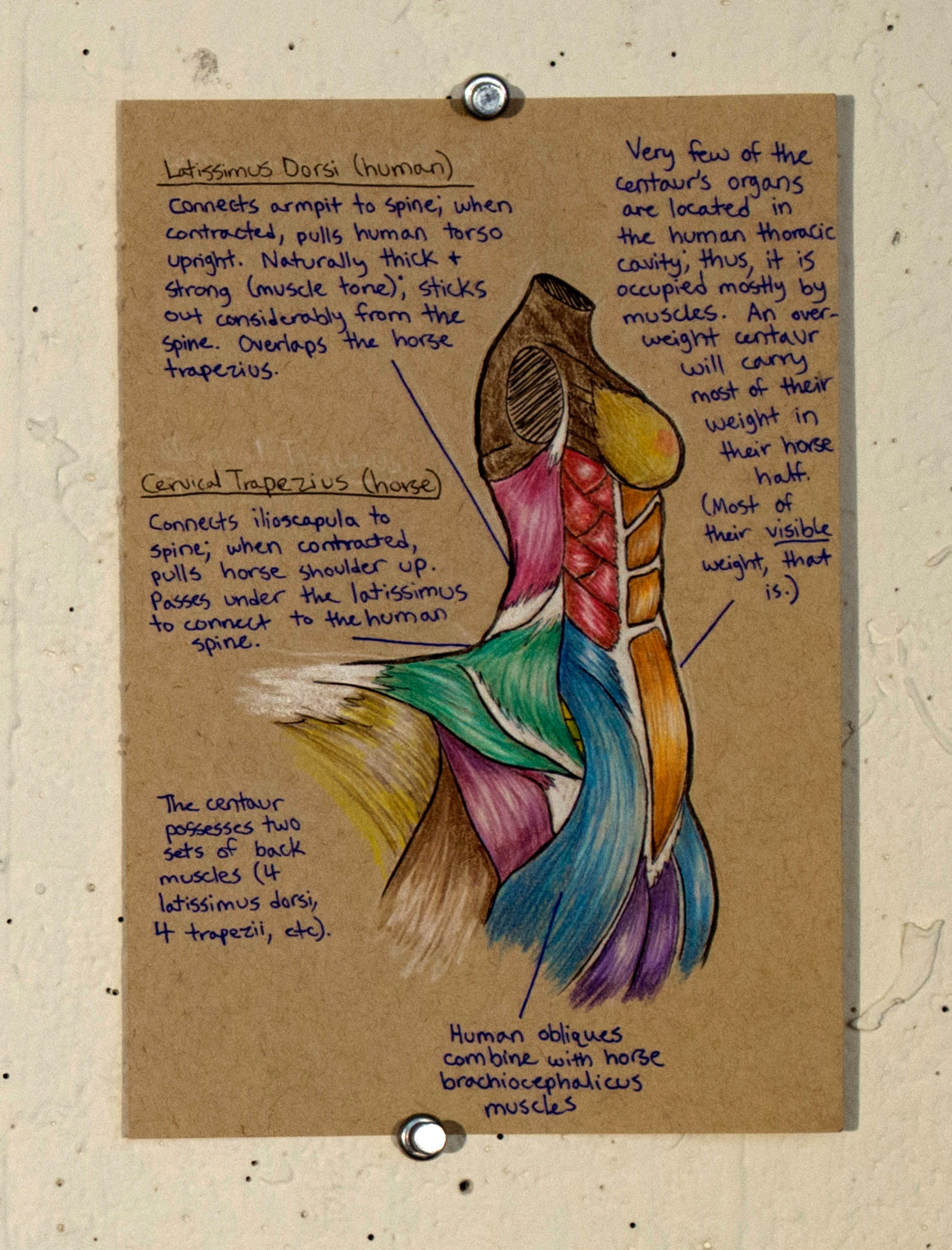
Sketch 3 - The Centaur's Abdominal and Back Muscles


